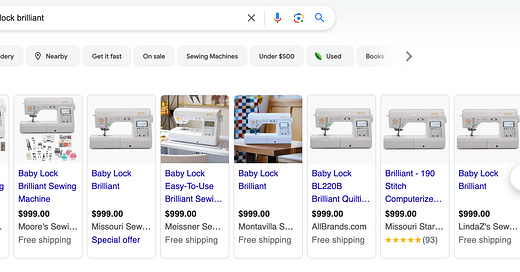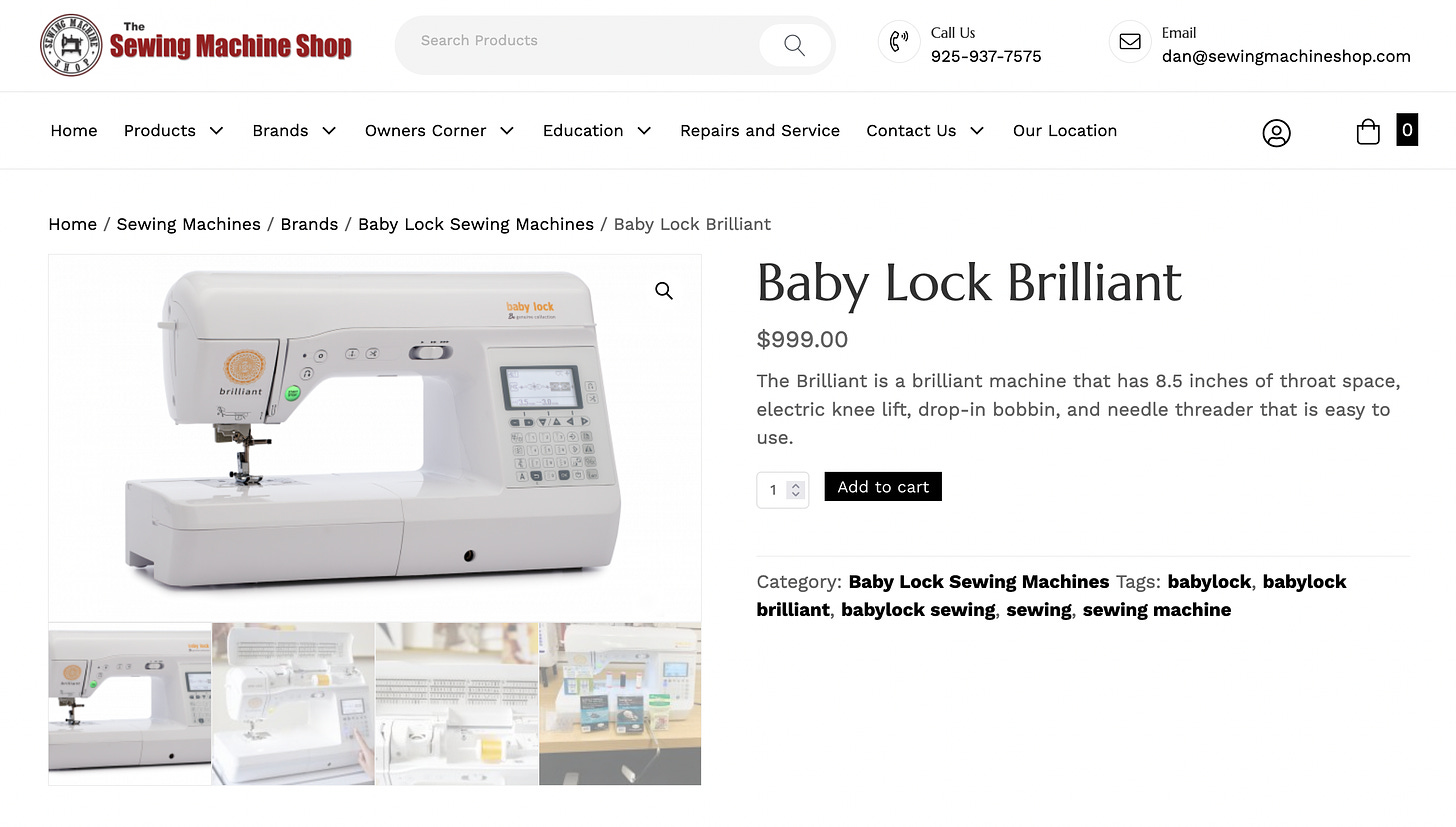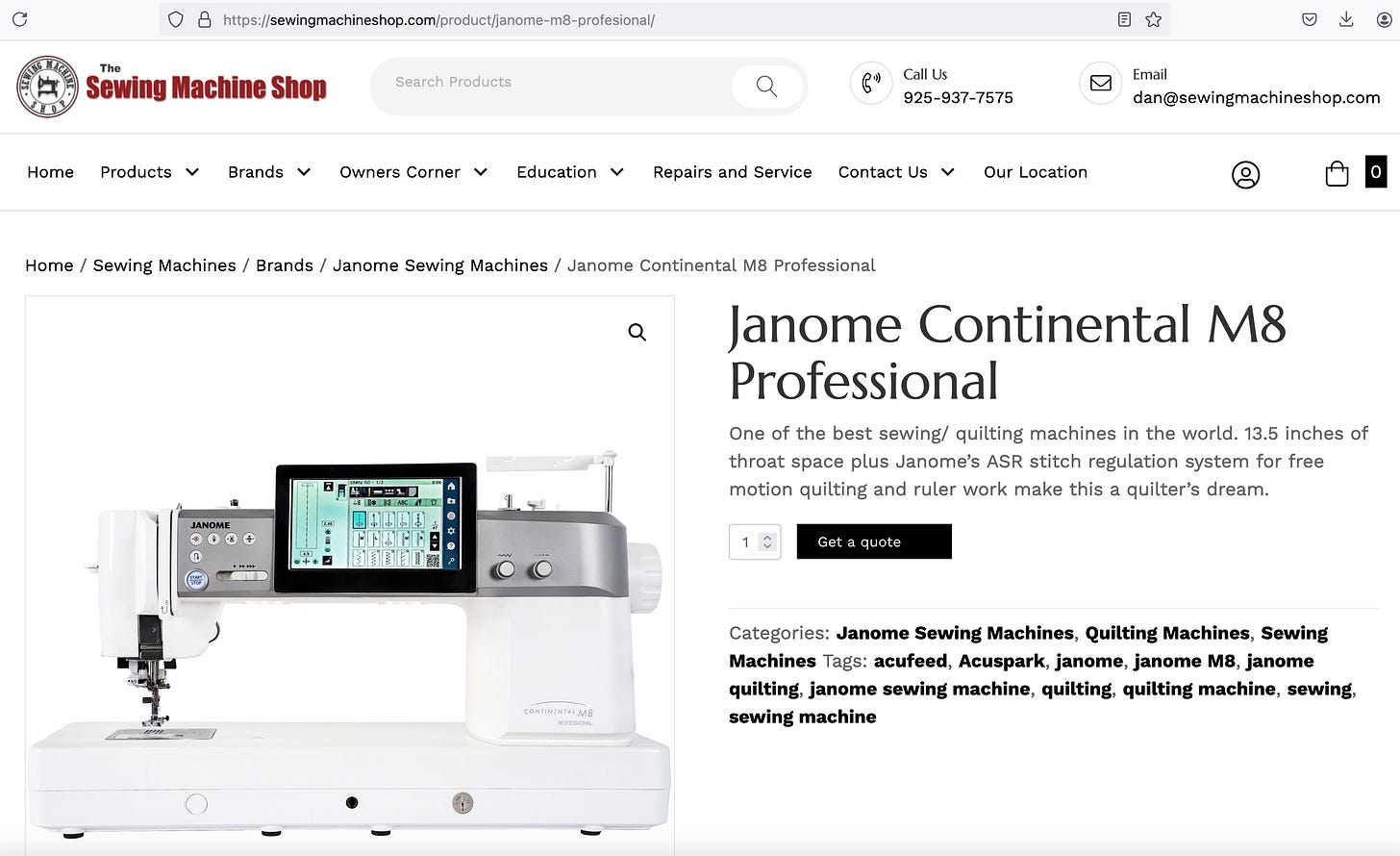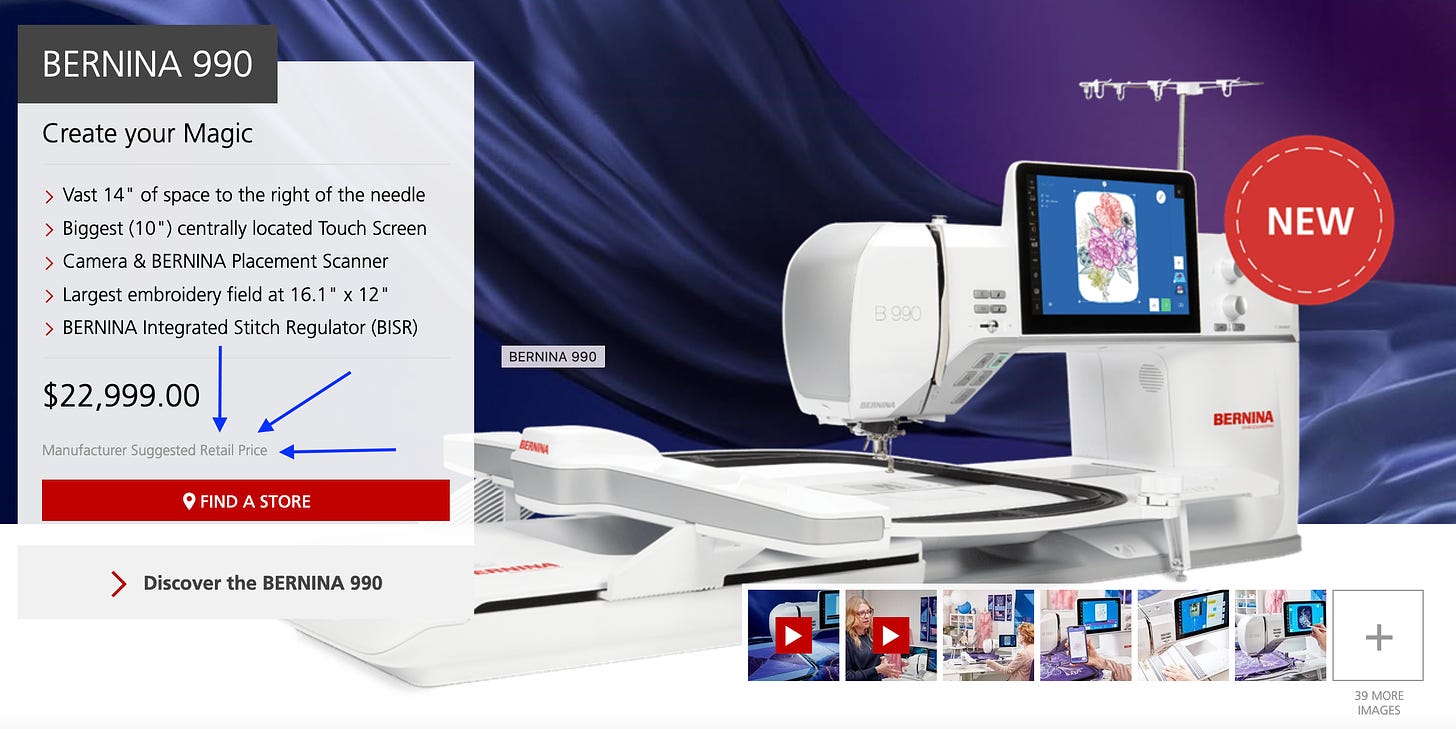Wading through MAP, MSRP, Trade-Ins, and other facets of sewing machine retail.
A good article to read before purchasing a sewing machine online!
Today’s edition of The Sewing Machine Newsletter is a little different than usual, but I think it’s worth writing because it could potentially save prospective sewing machine buyers hundreds, if not thousands, of dollars.
I am going to talk about the concept of MSRP and MAP, trade-ins, and other important facets of sewing machine retail. By understanding how these work, it should help you better navigate the world of sewing machine retail the next time you’re in the market for a new machine.
I hope you find it helpful.
-Cale
MAP & MSRP
As it pertains to online retail, there are two categories of sewing machines: machines that can be sold online and machines that cannot be sold online.
For the machines that can be sold online, you will clearly see the price of the machine and some form of an “Add to Cart” button. For these machines, the price you see is what we call the MAP price.
MAP stands for Minimum Advertised Price, and all licensed sewing machine dealerships have a contract with the sewing machine manufacturer that prohibits the dealership from publicly advertising a machine for a price exceeding the designated MAP price. That is why when you google search a sewing machine, the price will be the same everywhere you look:
On the other hand, on the product page of a machine model that cannot be sold online, you will not see an “Add to Cart” button, and you may or may not see a price.
In lieu of the “Add to Cart” button, many online retailers will have a button that says “Get a Quote” or something of that sort to encourage prospective buyers to contact them so that they can privately communicate the machine’s price.
If there is no “Add to Cart” button, but there is a stated price, then that is the MSRP, which stands for Manufacturer’s Suggested Retail Price. Just like MAP, the manufacturer sets MSRP, not the dealership. As it pertains to sewing retail, in most cases dealerships will sell their machines in-store for less than MSRP.
Why do MAP and MSRP exist in the first place?
MAP exists for a couple of reasons:
(1) To make sure profit margins are healthy enough to foster and grow a high quality customer service oriented dealer network that in turn grows the sewing industry as a whole.
(2) To protect smaller dealers from larger operations with resources to undercut prices (think Amazon, Walmart, etc.).
MSRP exists more so for top-of-the-line machines, to provide retailers with a pricing benchmark. While dealerships are not legally obligated to sell at that price, it serves as a guideline for what the manufacturer considers fair based on production costs, market research, and desired profit margins.
In the sewing machine industry, MSRP is typically inflated. For example, Bernina’s newest top-of-the-line machine, the B990, has an MSRP of $22,999. I don’t think any dealership is actually selling the B990 at $22,999 because that’s insane. However, they may tell people who bought the previous top-of-the-line machine, the B790 Pro, that they will get a trade-in of the price they paid for the B790 Pro deducted of that $22,999 MSRP price.
Online vs In-Store Pricing
Is the price you see online the same as the price you would see if you were the dealership’s brick and mortar store?
Sometimes.
Keep reading with a 7-day free trial
Subscribe to The Sewing Machine Newsletter to keep reading this post and get 7 days of free access to the full post archives.







